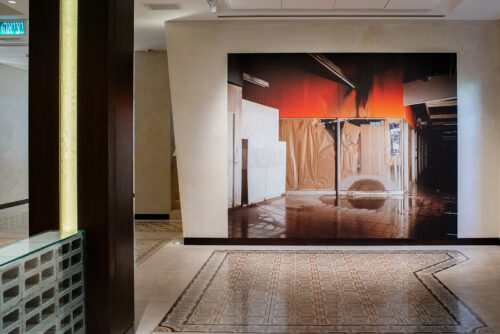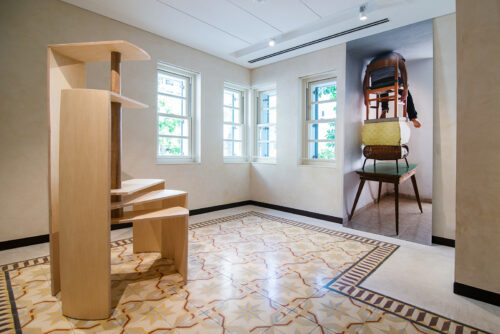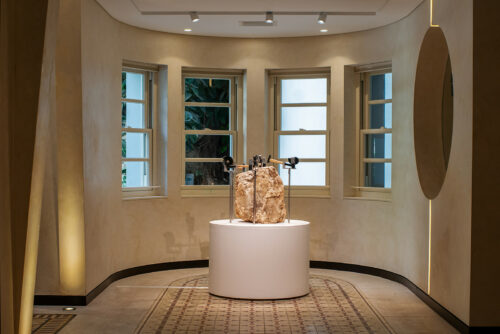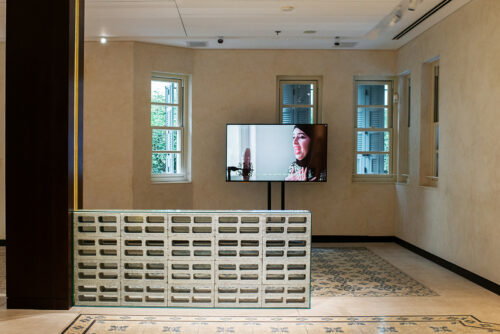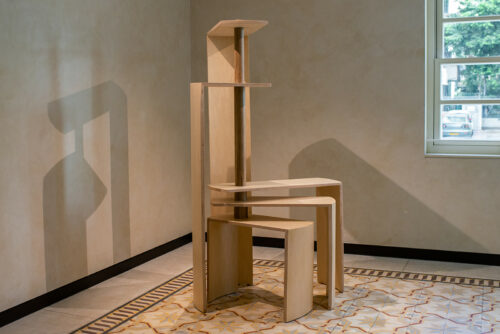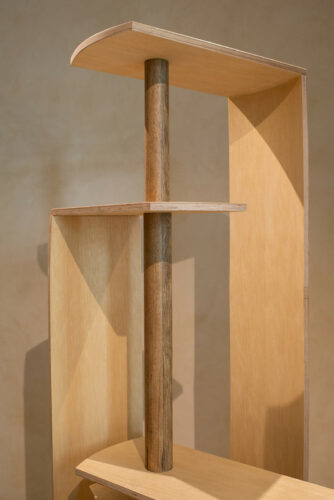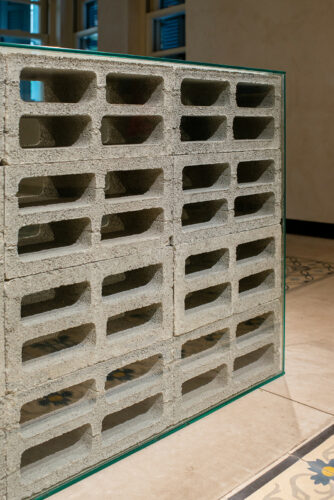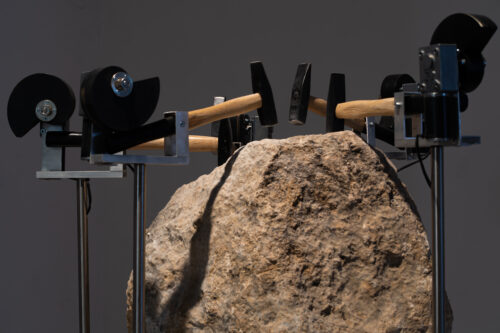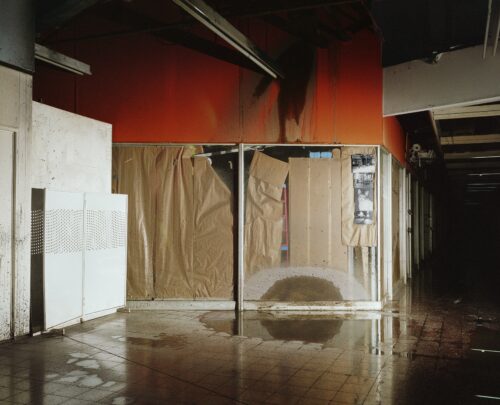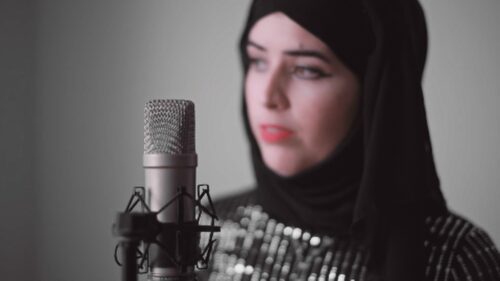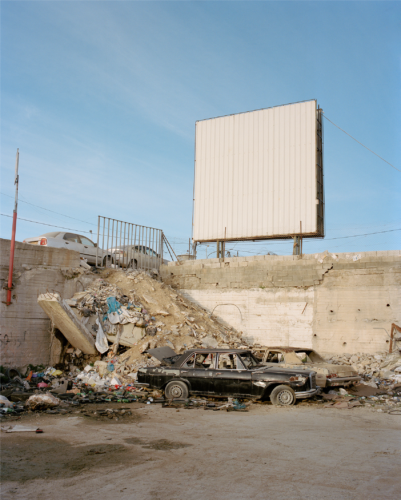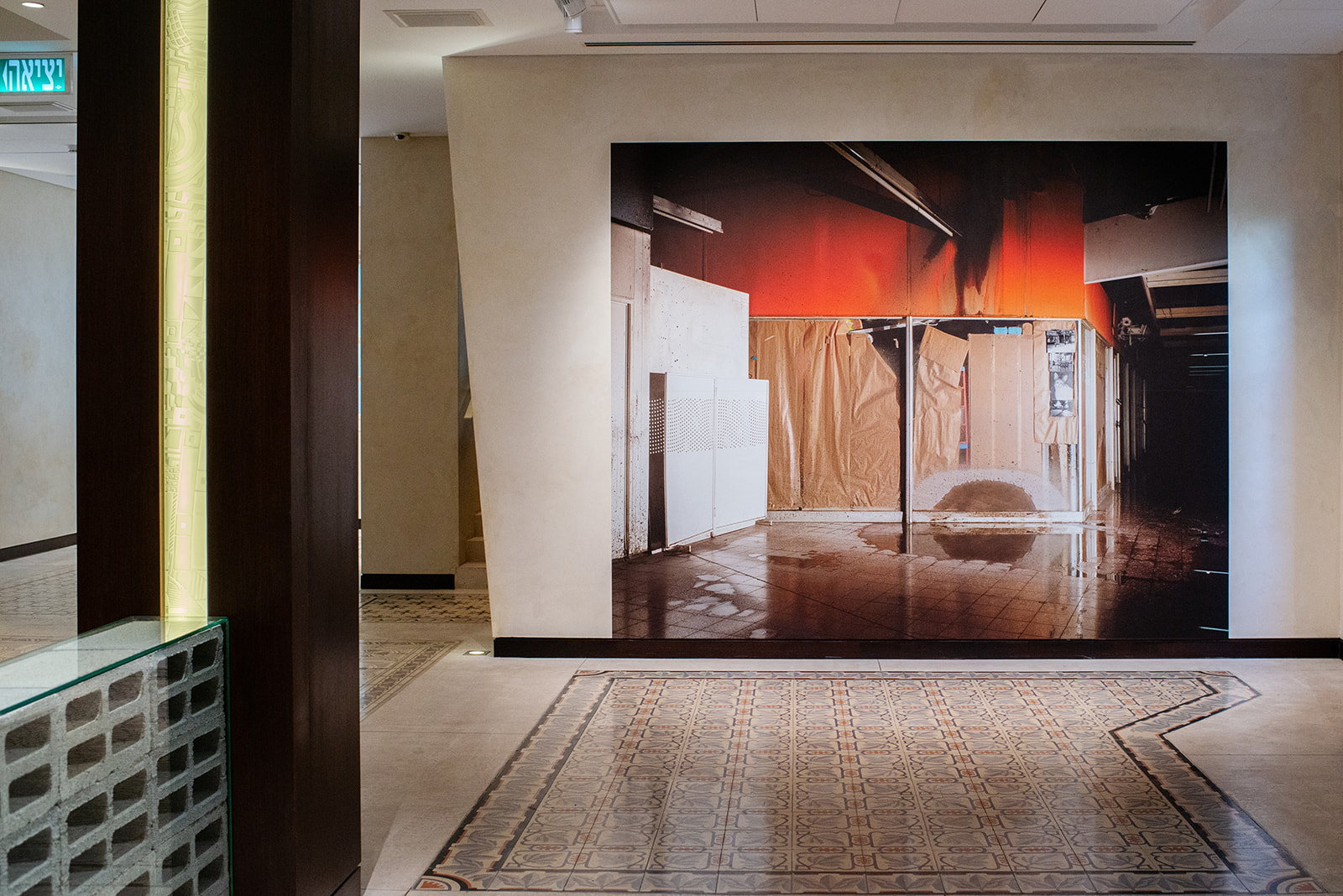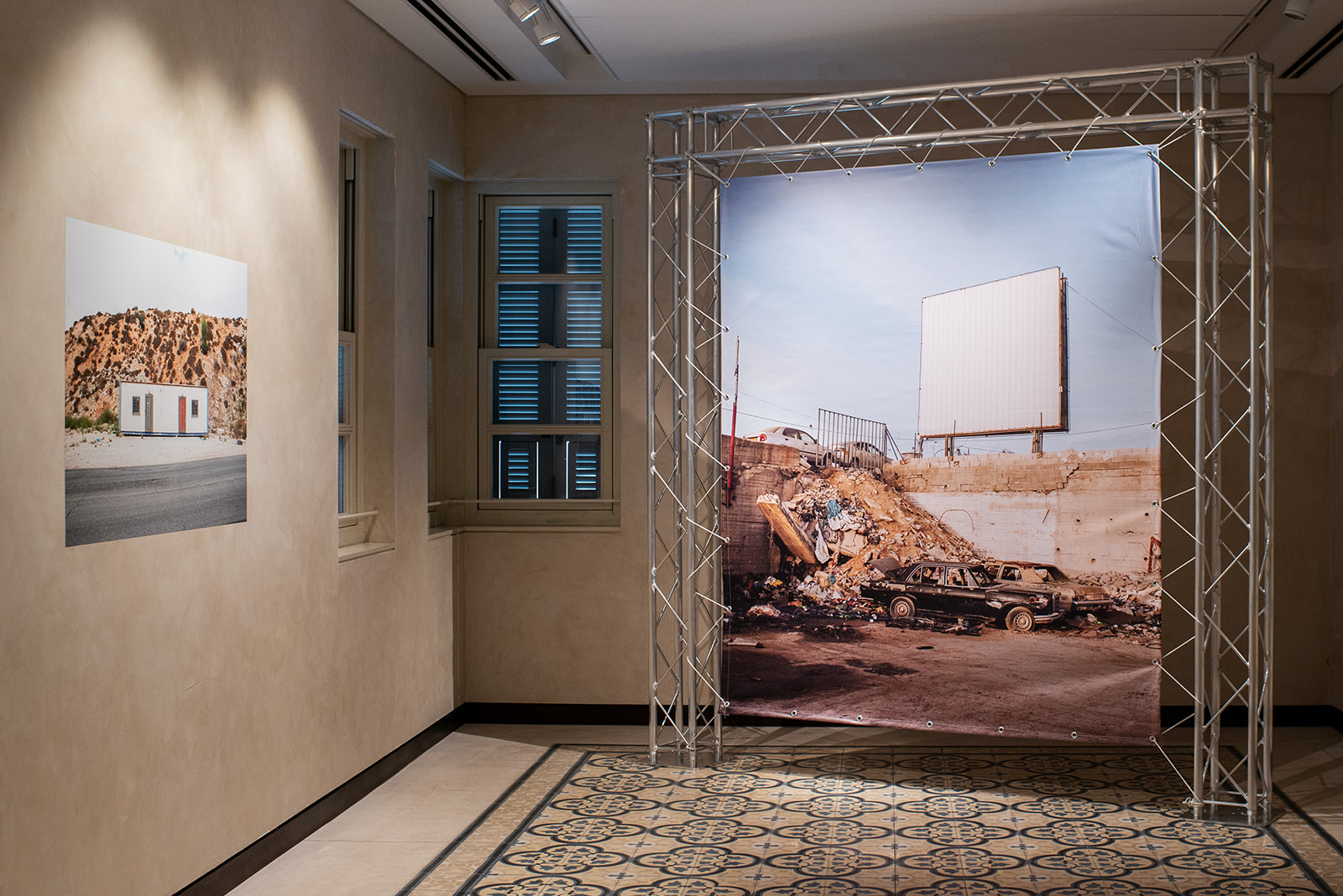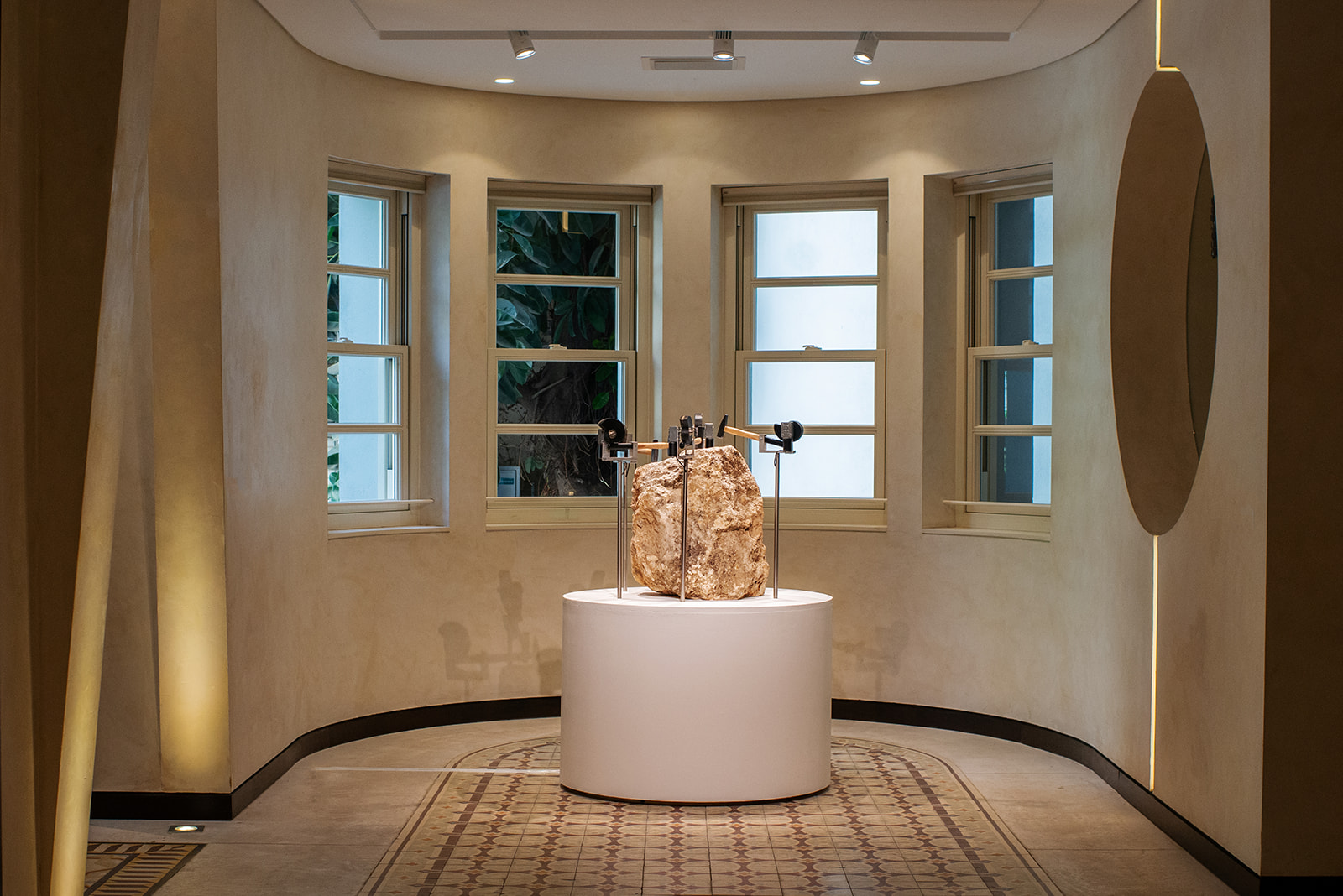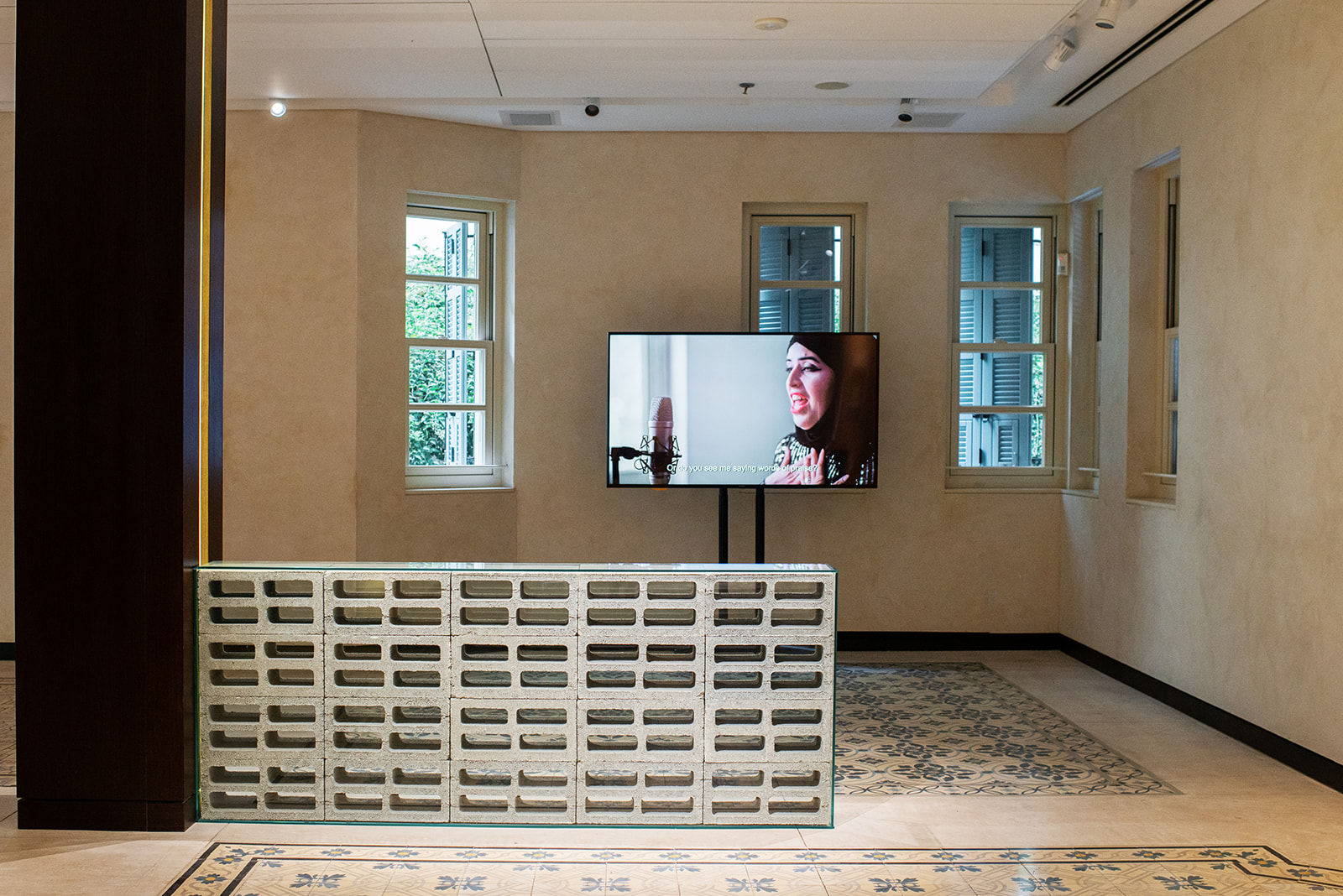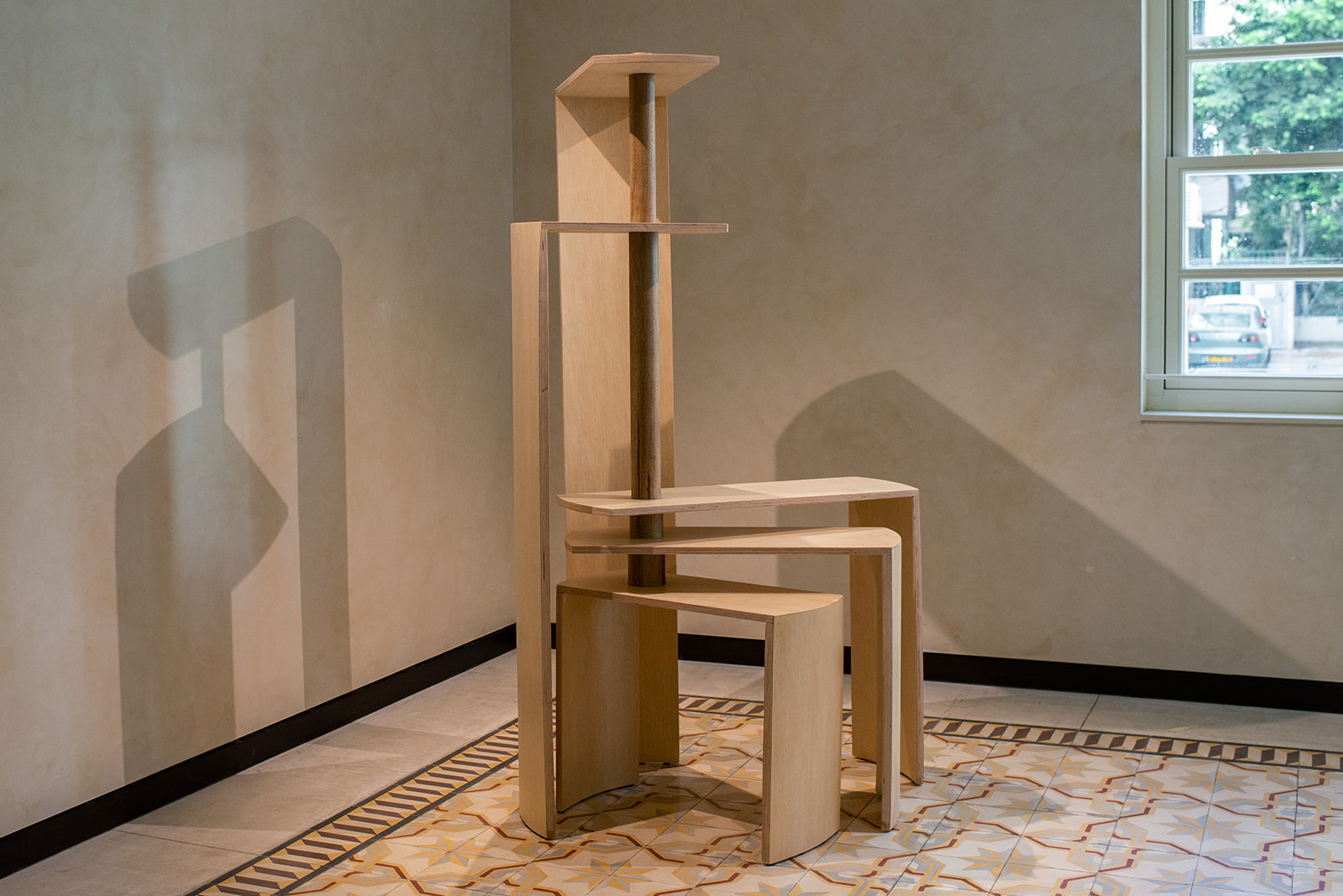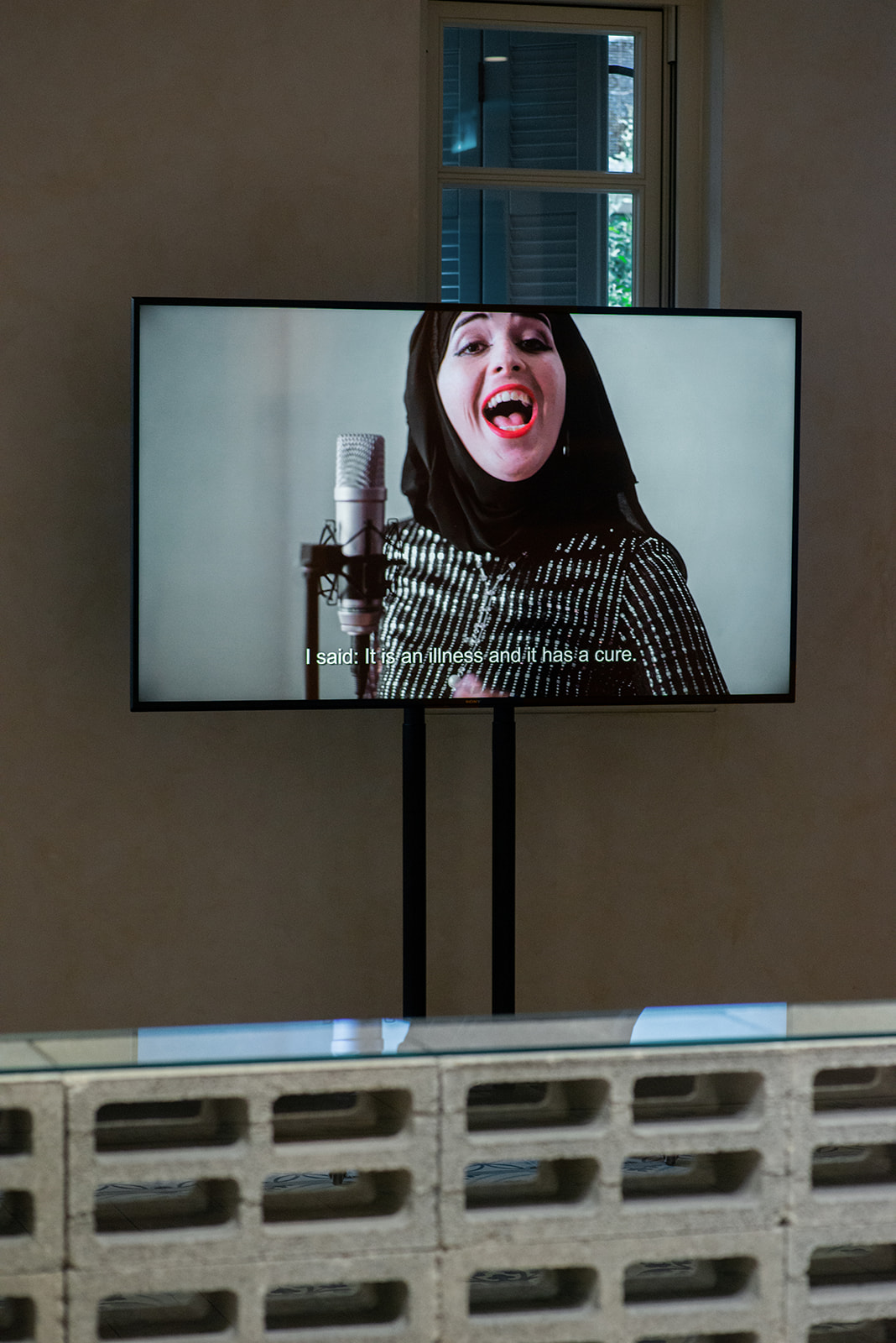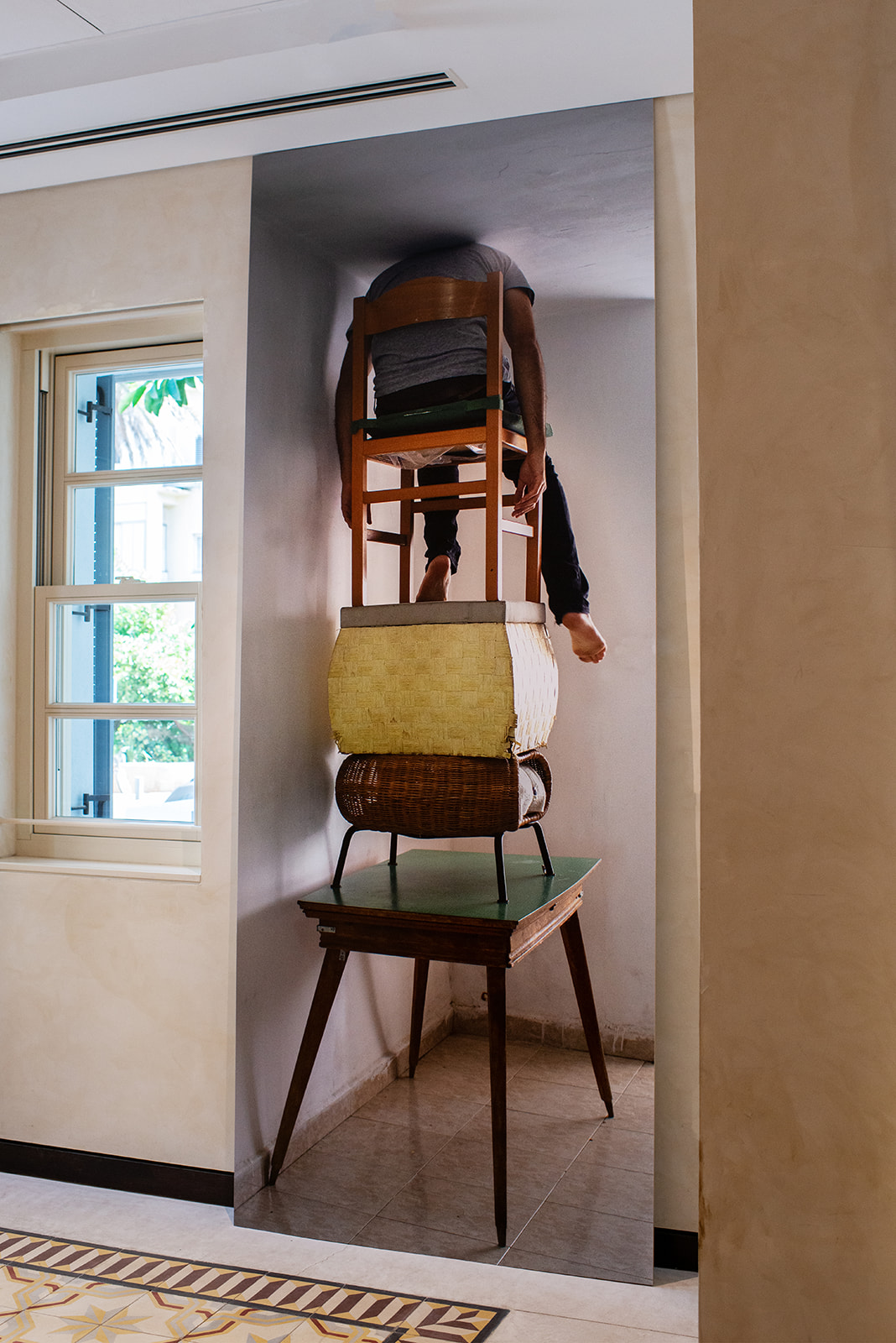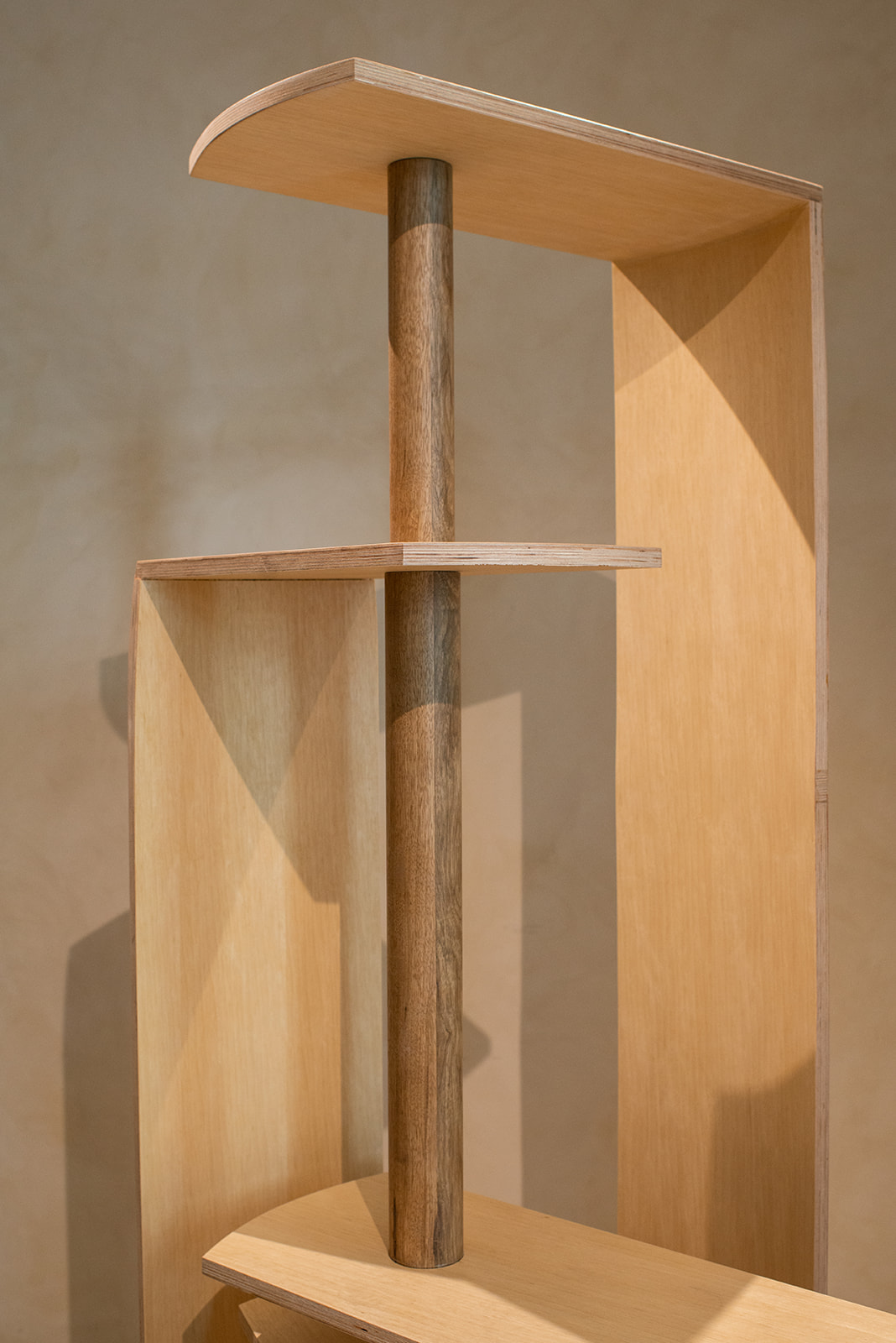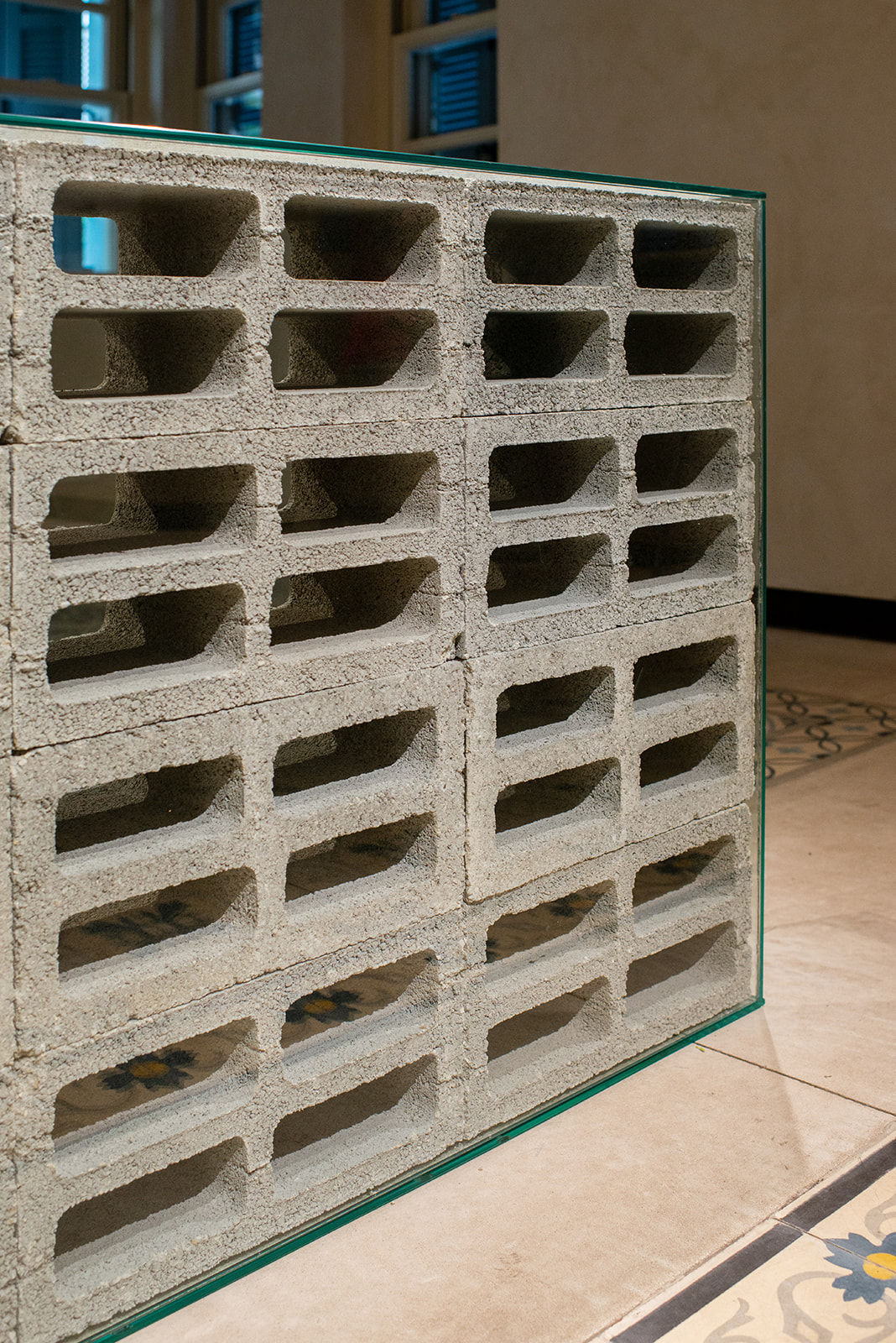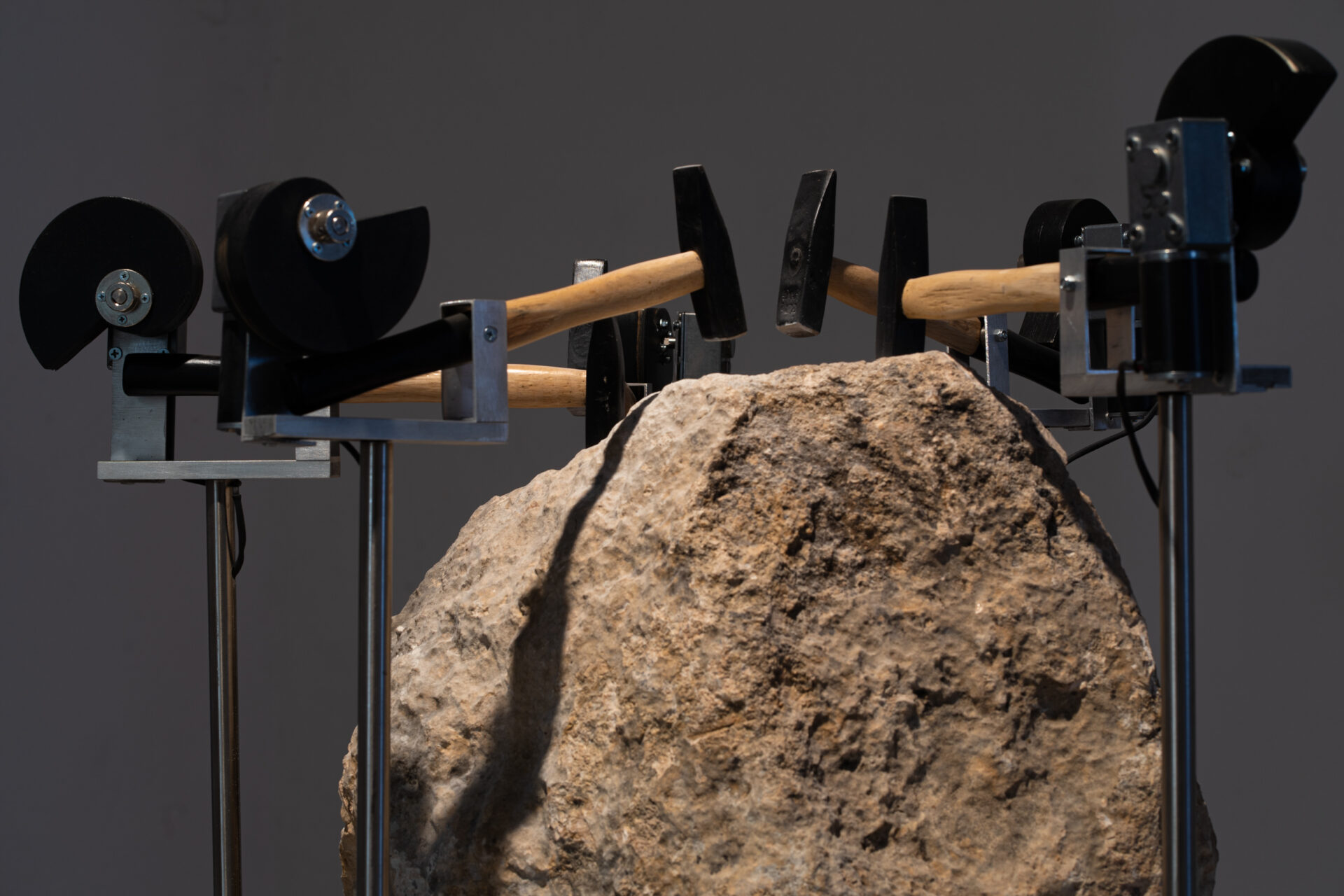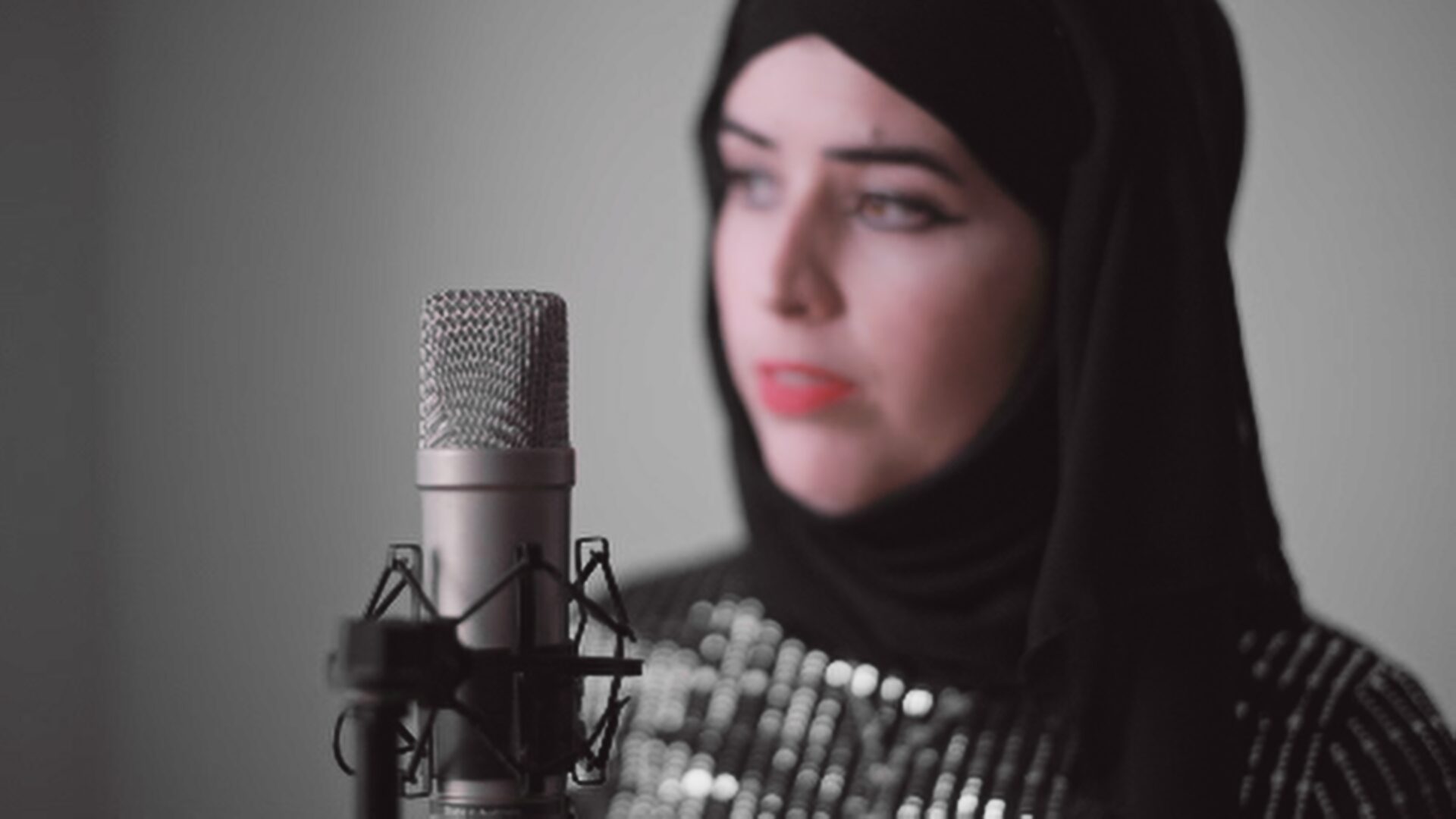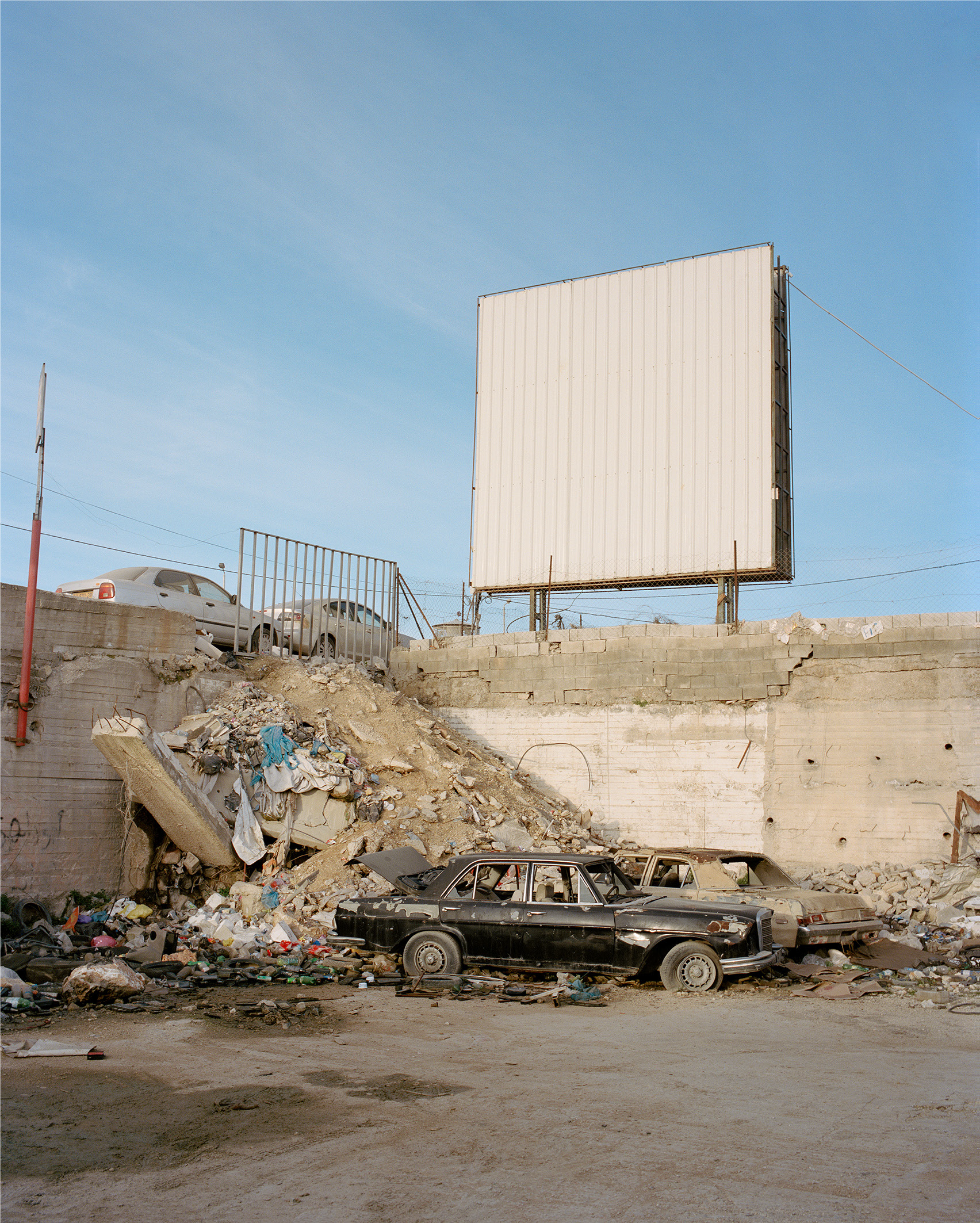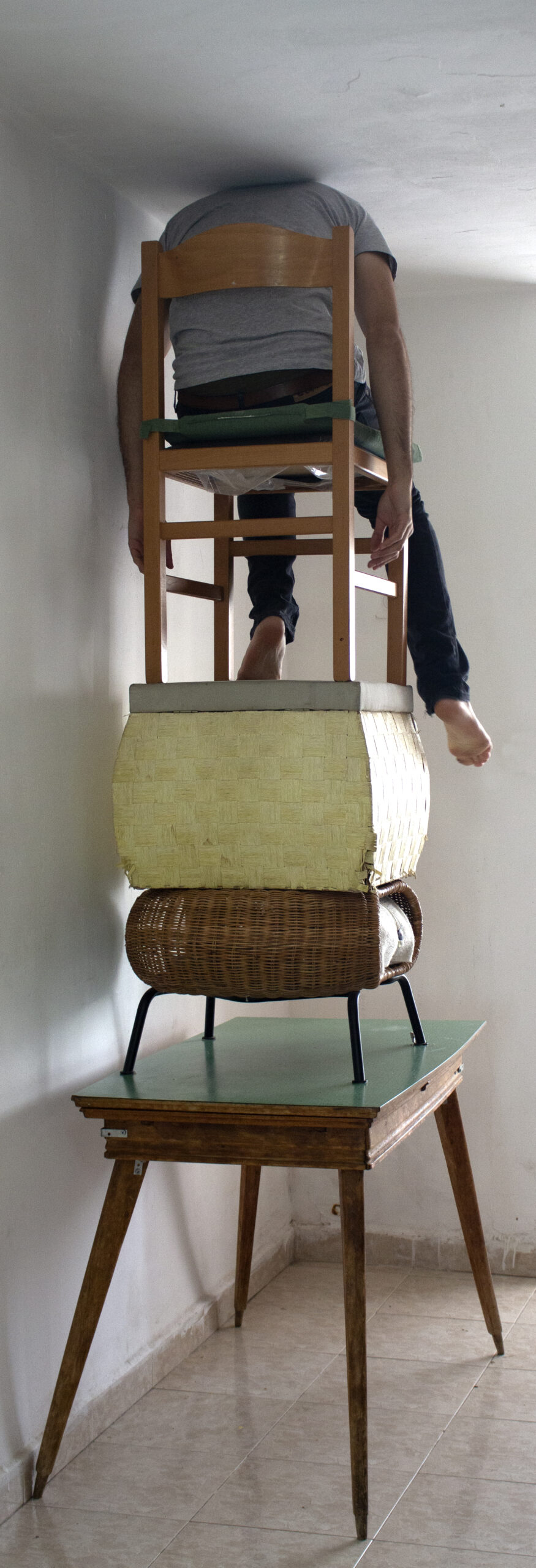Untitled is, to a large extent, an existentialist exhibition, which delves into liminal areas and the concept of “confinement” in its psychological and emotional contexts. The featured works touch, each in its own way, on the tension between outside and inside, between foreign and familiar, forbidden and permitted, between one form of being and another. The restriction of movement, the restriction of thought, the restriction of consciousness, and the way one responds to them, stem from the works, tying hidden strings between them. The works thus intertwine with each other, echo one another, both conceptually and formally, rustle with an intrinsic essence that is neither superimposed on them nor preceding them, but rather sprouts from within them. The absence of a title enables the exhibition to float in the realms of consciousness and act on a hunch.
Upon entering the exhibition, the viewer encounters two large photographic works that create an emotional illusion between exterior and interior. Saja Quttaineh‘s work presents an image of a large empty billboard on the outskirts of Jerusalem. The image is printed on reinforced tarpaulin and is presented as a large billboard in its own right, which was shifted from its place in the public sphere to invade the exhibition space. The act of direct photography extends into a conceptual and sculptural act in the space, echoing the presence of the elements in it. Another work by Quttaineh shows a temporary structure in an open area on the side of a road. The shooting angle transforms the three-dimensional structure into a mere façade, a geometric plateau rooted in the space, much like the empty billboard. In her works, Quttaineh dwells on scenes of accumulation and the spatial intersection of different temporalities. She isolates transient elements, scrutinizing them as sculptural objects in the public sphere, in a process that draws attention to the visible yet unconscious aspect of the place.
Featured on the opposite wall is a large wallpaper with an image photographed by Dafna Amira at Tel Aviv’s New Central Bus Station. Amira photographed in the terminal for three years, looking for traces of human activity or hints of its absence in its expanses. In the image on view, obstructions in the form of cardboard and large sheets of wrapping papers, which prevent the view into one of the terminal’s closed areas, are juxtaposed with small, pensive photographs in black-and-white, which face the common space. The work’s installation mode seems to open the exhibition space to another realm, a quintessential interior, which seems entirely exposed to the outside occurrences; a realm that is foreign and recognizable, personal and public, at the same time.
Between the photographic images stands Yonatan Auron Ophir‘s work—a wall made of ordinary gray cinder blocks, stacked on top of one another in a way that prevents mortar from being poured into them for reinforcement. Turning the blocks’ hollow cavities outward creates a formal pattern of sorts, which is repeated until the entire wall resembles an atypical mashrabiya; a mashrabiya that stands blocked inside a glass box, rather than allowing the passage of air through it. The structural element thus becomes an object of display, delimiting a given area in the space, while at the same time also inhabiting it.
In Aysha E. Arar‘s video work, the artist appears with a bare face and in a traditional head covering, in an act that oscillates between performance, acting, and singing, in constant movement between liberation, passion, and control. At first sight, she seems to debate whether and how to express herself. On occasion, it appears as though the microphone is the real protagonist of the work, and not a mere means for articulating and amplifying the voice, but gradually the text gains validity and weight, and the meaning of the act becomes clear. The work introduces notions, such as desire, illness, and madness, bringing to the fore entire histories of patriarchal violence and hidden, painful, and complex mechanisms of control and oppression employed in society at large. On opening night, the artist will present the performance at the front of the building facing Rothschild Boulevard. Like Eva Peron, calling onto her people from the balcony of the Casa Rosada, Arar’s voice will break out and pierce the urban space, calling spectators to pause and consider their own perceptions.
Inside the exhibition space, Arar’s voice fuses with a constant sound of hammering coming from depths of the gallery, where Shir Handelsman‘s work is installed: a kinetic sculpture made of heavy limestone, surrounded by a set of hammers, which pound the stone continuously, accelerating its disintegration and dictating the movement of sound in space. The work as a whole functions as a makeshift musical instrument, but also as a kind of clock, which sets the time, attesting to its constant passage. As in other works by Handelsman, this piece, too, is based on a complete musical composition, which is given an integrated audio-visual expression.
Daniel Kep‘s work was created during a period of self-imposed confinement at home. It depicts a structure comprising furniture and a body, piled atop each other, using up the physical space available to the limit. The work’s presentation from floor to ceiling in the gallery creates a space within a space, leading the sense of discomfort outside, from the inner space of the photograph to the viewer in the exhibition space.
Adam Elezrah‘s work, on the opposite side of the gallery, is reminiscent of a mobile staircase rotating on its axis. It is one of a series of objects designed for a new dance piece, which is a collaboration between the artist and his sister, dancer and choreographer, Iyar Elezrah. Possibly a sculpture, possibly a piece of furniture, or décor, the work was created in parallel to the choreography, especially for the exhibition, and will be used by the dancers for various actions over the duration of the show. Despite the assumption that this is a folding staircase, one that converges onto itself, such convergence is structurally impossible, and in effect, the object embodies a potential for movement, which cannot be realized.
